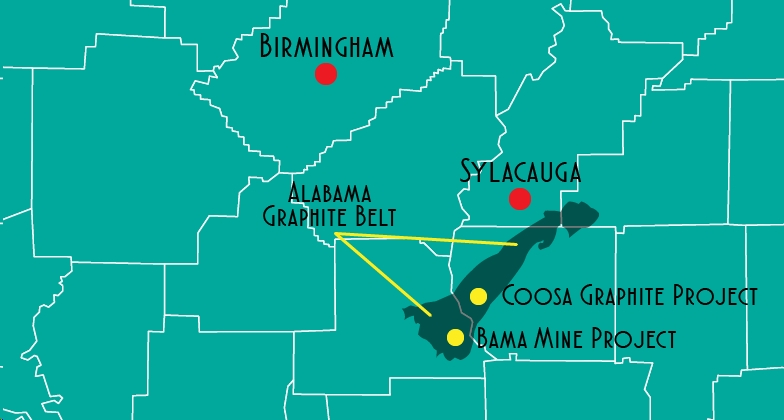COOSA COUNTY, Ala. – Significant levels of vanadium have been found in Coosa County’s graphite project owned by Westwater Resources.
Vanadium is a lightweight metal used in the construction industry, in high strength steel alloys, and in large grid storage batteries. According to the United States Geological Survey (USGS), about 80,000 metric tonnes of vanadium per year were consumed worldwide in 2017, approximately 8 percent of which was utilized by the steel industry, where additions of the metal to conventional steel materials adds strength and corrosion resistance.
Importantly for Westwater, demand for Vanadium Flow batteries is increasing as solar and wind power generators seek to make their installations more reliable electricity providers. Market research firm Roskill predicts that there will be a 4 percent increase in demand for vanadium, mostly in China.
Currently, about 8 percent of all vanadium is produced in South Africa, China and Russia. There is no significant production of vanadium currently in the United States.
Christopher Jones, President and CEO of Westwater Resources, stated “We are delighted to confirm the discovery of vanadium on our existing mineral leases in Alabama. The prospect of adding a vanadium credit to our already robust economics at the Coosa Graphite Project appreciably increases the value of our holdings. The Westwater team is designing an exploration program to more fully define the extent of the vanadium mineralization.”
“Westwater holds two large graphite development projects that now also may contain significant levels of vanadium. Together with our lithium properties and uranium holdings in the American West, and further to the development to our Alabama-based graphite business, the potential income we can generate from vanadium could translate to a higher valuation for WWR in the future,” concluded Mr. Jones.
The occurrences of elevated concentrations of vanadium in the Alabama Graphite belt have been known since 1940s, as documented by the United States Bureau of Mines Report of Investigations 4366 (Dec. 1948). USBM documents anomalous vanadium results for samples from the now inactive Fixico graphite mine, located on one of the properties leased by Westwater and adjacent to the Coosa Graphite Project and from Westwater’s Bama Mine in Chilton County, Alabama and from the Dean Prospect, situated on properties controlled by Westwater.
About Westwater Resources
WWR is focused on developing energy-related materials. The Company’s battery-materials projects include the Coosa Graphite Project — the most advanced natural flake graphite project in the contiguous United States — and the associated Coosa Graphite Mine located across 41,900 acres (~17,000 hectares) in east-central Alabama. In addition, the Company maintains lithium mineral properties in three prospective lithium brine basins in Nevada and Utah. Westwater’s uranium projects are located in Texas and New Mexico. In Texas, the Company has two licensed and currently idled uranium processing facilities and approximately 11,000 acres (~4,400 hectares) of prospective in-situ recovery uranium projects. In New Mexico, the Company controls mineral rights encompassing approximately 188,700 acres (~76,000 hectares) in the prolific Grants Mineral Belt, which is one of the largest concentrations of sandstone-hosted uranium deposits in the world. Incorporated in 1977 as Uranium Resources, Inc., Westwater also owns an extensive uranium information database of historic drill hole logs, assay certificates, maps and technical reports for the western United States. For more information, visit www.westwaterresources.net.






